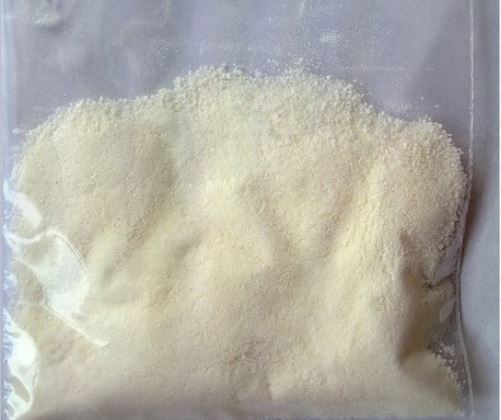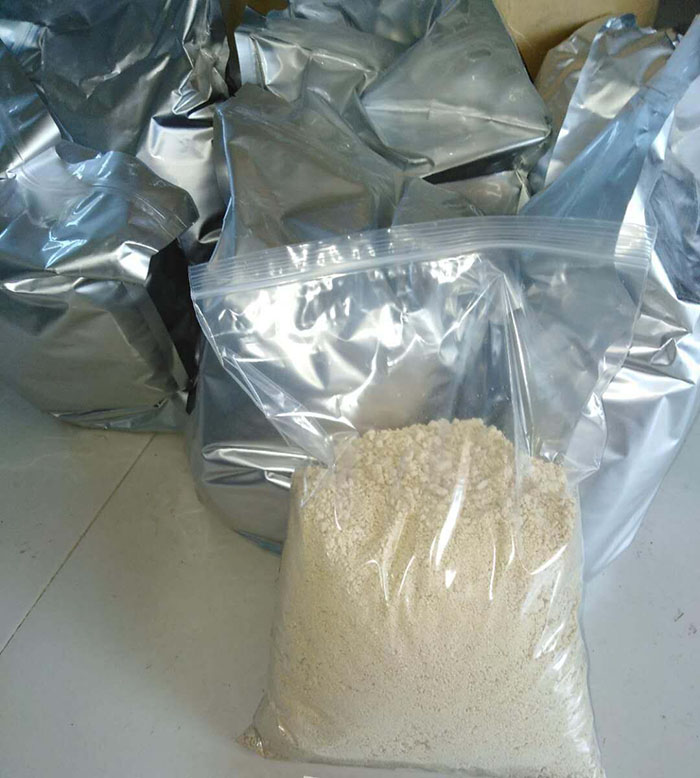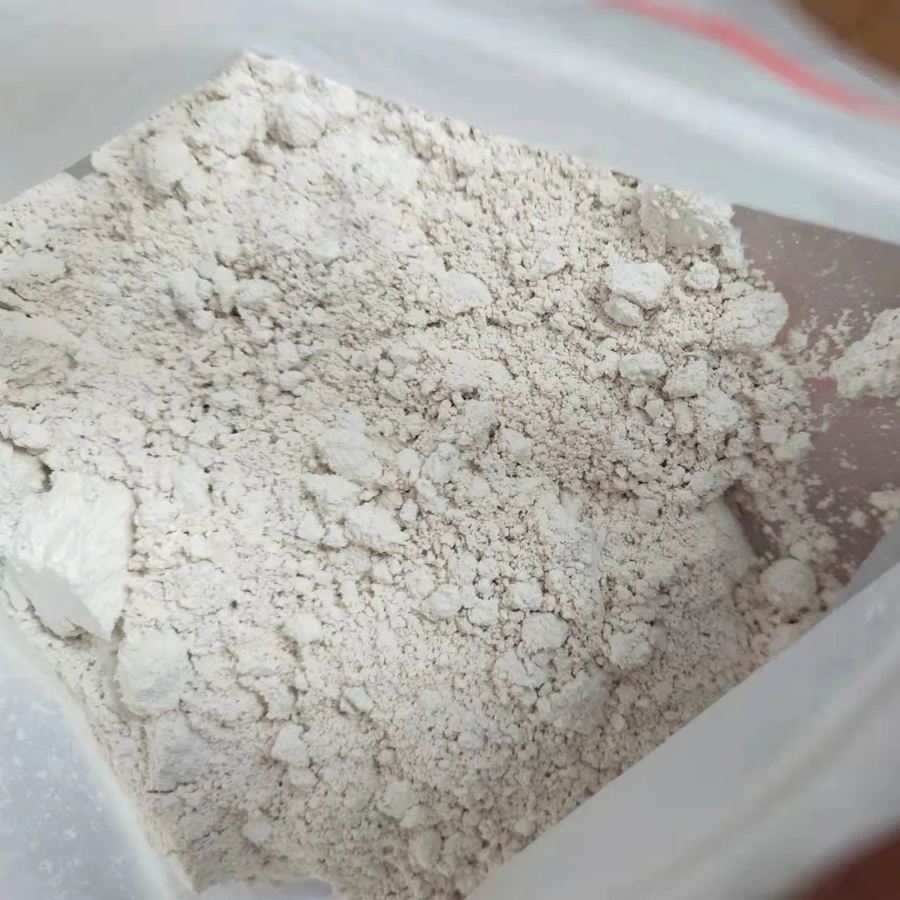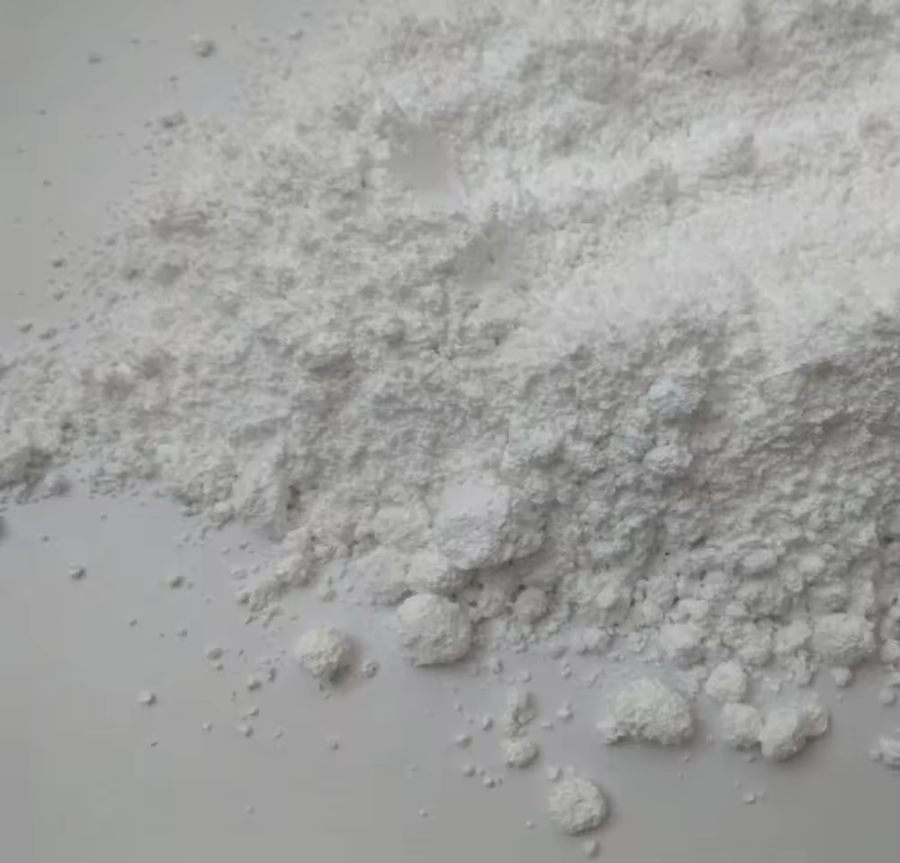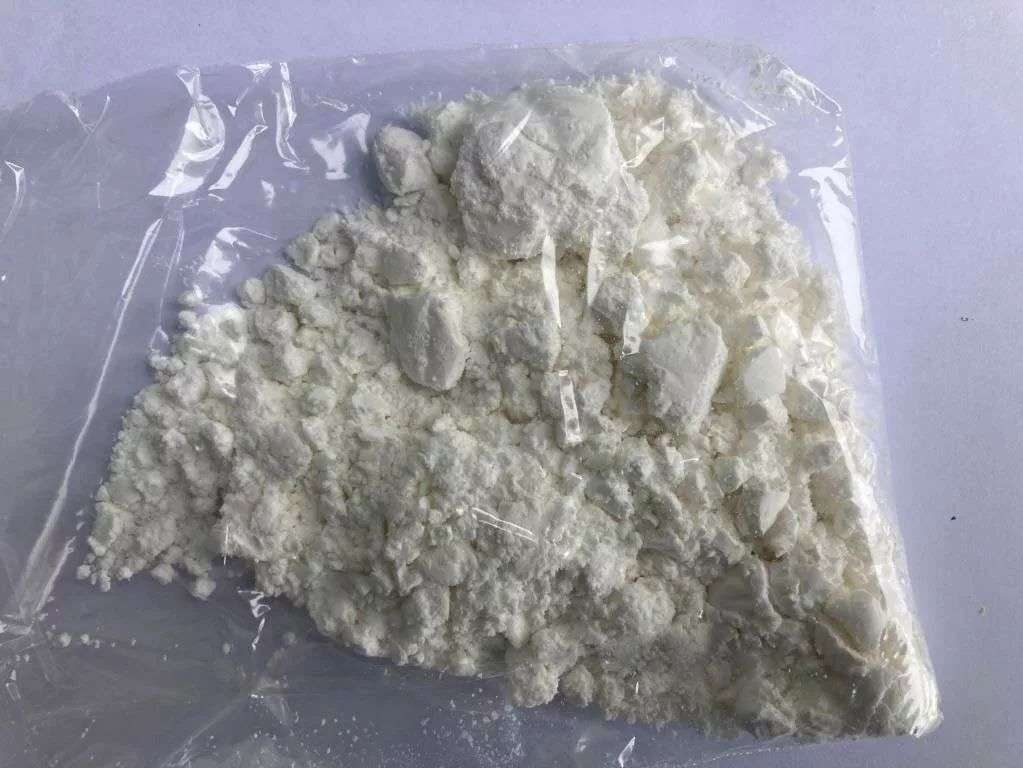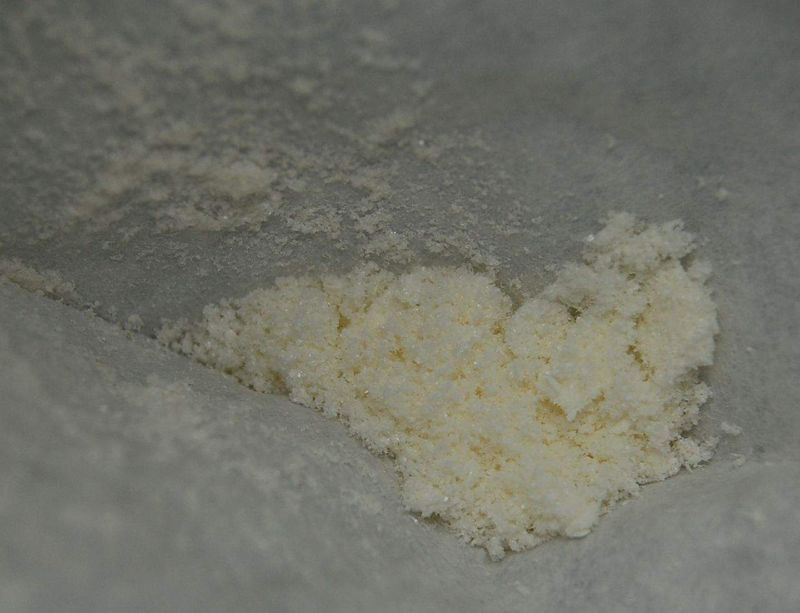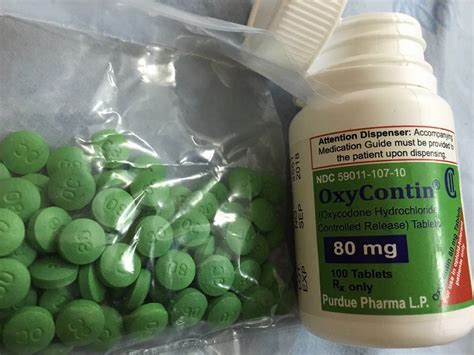
It is a white, fine crystalline powder (something resembling pure snow), obtained by extraction from the leaves of the plant Eryhoxylum coca or simply from the leaves of the coca. Coca leaves are the most ancient powerful stimulant of the psyche known to mankind.
From the leaves of coca, which are processed with kerosene and rubbed, it turns out paste. When you add hydrochloric acid to this paste, you get salt – cocaine hydrochloride (cocaine HCL). This salt is also sold on the streets.
Cocaine salt easily dissolves in water, so drug addicts not only sniff it, but, with increasing dependence, inject a syringe into the veins or just eat.
However, since the inhalation of cocaine through the mucous membrane of the nose, comes quite strongly pronounced specific intoxication, it is the inhalation of cocaine nose (sometimes just from the back surface of the palm, sometimes with the help of the most refined tubes, rolled into a tube of banknotes, etc.). remains the most popular way of taking cocaine.
We want to note immediately that unlike the inhalation of heroin, this method of taking cocaine does not exclude either fatal overdoses or specific psychoses associated with delusions of persecution and aggression.
Just like in the case of heroin, various impurities most often contaminate the cocaine salt. Traders often add cocaine to various sugars (lactose, mannitol). Very often, local anesthetic drugs like lidocaine are added. The addition of such medicines allows customers to feel the numbness or frost of the mucosa, which, thanks to the legends of drug dealers, many drug addicts consider to be the action of “pure cocaine“.
Add to the powder cheaper stimulants such as caffeine or the same amphetamines, add luminal and other tranquilizers …
The American police reports that the pure cocaine salt in powders that can be removed on the streets of America, contains between 10 and 40%. Moreover, the powder containing 40% of cocaine can be removed only in rich areas – mainly in the places of residence of the sports and artistic elite. In the streets of poor and medium–sized areas, the content of cocaine in the powder sold is never more than 10%.
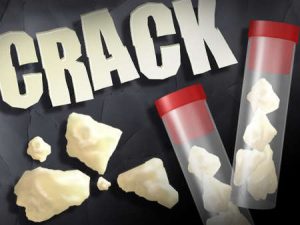
Crack
Psychologists joke that man is “an animal that does not learn from its mistakes.”
In the mid-1970s, the attitude towards cocaine was again formed as a completely harmless substance. Again, books and articles appeared that claimed that cocaine was not addictive. Some politicians openly advocated the legal sale of cocaine. He was described as a “natural”, “light”, a drug.
However, cocaine was expensive. He was in vogue among the bohemians and the semi-bohemian elite: Hollywood movie stars, famous professional athletes and their entourage. In this environment, it has always been fashionable to dabble with cocaine. It is common knowledge that so many people have experienced dependence on cocaine, such as Marelin Monroe and Vladimir Vysotsky.
However, the use of cocaine only by the rich layers of society did not suit the Colombian and American drug lords. To further enrich them, it was necessary to find a way to make cocaine a more “mass commodity”, and for this it was necessary that it, first, become substantially cheaper, and secondly, that the person’s mental dependence on him sharply increased.
Both of these issues were solved by drug cartels in the mid-1980s, when a new form of crack cocaine appeared in the streets of America and Europe – cocaine.
Until the mid-80s, cocaine was sniffed. That is, the main route of its entry into the body was the way through the nasal mucosa. But as the inhalation of the drug sharply narrows the blood vessels of the nasal mucosa, the absorption of cocaine into the blood is slow. The “sniffers” of cocaine may develop stimulant psychoses and even cases of fatal overdose, but this happens relatively infrequently.
Much faster cocaine is absorbed through the lungs in the process of smoking. But when the heat is ignited due to the high temperature, the cocaine salt practically instantly collapses, so pleasant sensations of intoxication when smoking conventional cocaine are very short, light and instantly replaced by “breaking”.
In order for cocaine to become a smoke, it was necessary to isolate the cocaine base from the cocaine salt. Many experiments of drug addicts in this area were unsuccessful. They, for example, tried to mix cocaine with a flammable ether and received deadly burns while trying to smoke this mixture.
Approximately, in 1985-86, a “safe” way was finally discovered to turn cocaine into a substance that can be smoked – cocaine was mixed with a completely banal food alkaline solution and water. The resulting solution was dried or evaporated. As a result of this process fragile, petal-like plates are formed, which break into small pieces and smoke.
Processed in this way, cocaine has received a formidable name “crack”. This word comes from the English “crack” – “crackling”, as when burning this substance, distinctive crackling is clearly audible.
When smoking “Crack” – cocaine, cocaine is absorbed throughout the vast surface of the blood vessels of the lungs. Once in the bloodstream of the lungs, cocaine is several times faster than when inhaled through the nose, it penetrates the human brain. The joyful uplift of mood and the whole complex of pleasant sensations of intoxication (“arrival”) comes so quickly and strongly that many of our patients consider these sensations even more pleasant than the intravenous introduction of the same cocaine.
The period of “buzz” (intoxication), as a rule, is very short. On average, after 20-30 minutes there is a need to smoke the next dose. The rate of occurrence of mental dependence when smoking crack is higher than even with intravenous administration of cocaine.
Crack was a substance safe in production. Dilution of salt followed by evaporation increased the volume of products produced, and consequently, the cost of cocaine when selling it in the form of crack decreased several times.
In addition, the strength of the drug increased, which allowed traders to sell crack in small portions. Each such portion was relatively inexpensive (on average in America in the mid-1980s, one serving cost about $ 15). Such prices made crack cocaine accessible to all segments of the population first in America and then in Europe.
Thus began the second cocaine epidemic, the end of which is not visible to this day. The speed with which crack causes psychic dependence is such that, because of its malignancy, the second cocaine epidemic does not go to any comparison from the first end of the 19th century of the 20th century.
The first information about the crack appeared in the press in November 1985, and in February 1986 the US media spoke of crack as the main national disaster of the country. By 1991, official statistics had become known that about 4 million Americans, about a million French, consumed crack up to 1.5 million Japanese. According to American statistics in 1970, there were no ambulance calls due to cocaine overdose. In 1990, there were about 80,000 such cases.
But not even this became the main problem of the “epidemic” of crack. The word “crack” throughout the world is synonymous with crime and violence. Crack and violence have become inextricably related things.
On the one hand, this is crime related to the trade and spread of cocaine. Giant criminal organizations, who call themselves cartels, are in constant struggle to control the crack markets. In 1992, only during the “cocaine showdown” between groups in America, killing 4,000 people.
The annual income of the largest Colombian cartel “Kali” (it is interesting to note the coincidence of the name of the cartel with the name of the most terrible goddess of the pantheon of ancient India – the goddess of death Kali) is estimated at 400 million dollars. And the total annual income of organized crime from trading crack in the US magazine “South” estimated in 1996 at 600 000 000 000 dollars.
On the other hand, this crime is connected with people who smoke crack. Crack destroys personality swiftly. For the sake of obtaining crack or money to buy it, people go for everything, including murder, selling their own children and child prostitution.
The so-called “crack houses” – places of sale and smoking crack have become hotbeds of crime and AIDS. Sexual “services” as a form of calculation for various psychostimulants, primarily crack, have become something of a “norm” among drug addicts.
We cite the story of a crack addict in the book Drugs and Society, (Moscow, 1998):
“In the crack house I saw things that I have not seen anywhere else. It is impossible to imagine a worse place. No one cares about anyone, do whatever you want. What have I not seen! I saw a girl that ____________ fifty times, until she was already all in the blood and even could not get up, and this is a small piece of crack. I saw one guy splashing a woman in the face with acid, just because she did not want to sleep with him anymore. I saw how one shot from the shotgun was fired at one of the eggs for trying to steal some crack. Hey, man, these are bad places … ”
“Cheap snow” – crack has not yet reached our country. Today we are dealing only with the beginning of the cocaine epidemic.
“Expensive” and “safe” Colombian cocaine slowly penetrates to us through the creative and financial elite of society. Today in Russia, one gram of cocaine costs about $ 300.
But there are already more “cheap” versions of it, ranging from $ 100 to $ 250 per gram in various regions of the country. Our reader has probably already realized that drugs do not become cheaper “in themselves”, a decrease in their cost is always associated with their dilution with foreign substances.
The next step of drug dealers should be the appearance on the streets of “cheap” – “people’s” crack. Can we together manage to prevent the epidemic of crack after what we are experiencing now and kill the whole epidemic of heroin in its path?
How cocaine acts on the human psyche or the acute effects of its action.
The state of intoxication of various psychostimulants is very little different from each other, as you will see below. Cocaine was simply the first drug of this group, which faced the European civilization. Therefore, most of the effects that occur with a single intake of stimulants, described exactly by the example of cocaine.
Everything that is written in this chapter will to some extent apply to all the psychostimulants described in the following chapters of our book.

Doctors singled out the following aspects of cocaine intoxication:
Euphoria is a sudden and sharp uplift of mood. Feeling of joy of existence, novelty and festivity of the surrounding world. A person becomes more sociable and talkative. He easily and “enthusiastically” informs others about any details of his life.
The sensation of a rush of energy – the body seems easy, the ability to act, commit acts is not limited. The person embraces a feeling of vivacity, unlimited physical abilities, the desire to sleep disappears.
However, this sensation is seeming. As shown by experiments under the influence of cocaine, the coordination of movements and their accuracy sharply decreases. Most of the acts committed during the cocaine intoxication later turn out to be erroneous, which caused a lot of trouble.
Strengthening of mental activity. It seems to man that his mental faculties are not limited. He believes that he perceives any information much easier than usual. The ability to remember seems to him not limited.
However, when the period of intoxication passes, it quickly turns out that all the knowledge acquired by man has disappeared somewhere. In order to remember them, you need to take the drug again.
Incidentally, this is a general rule, to which we will repeatedly return: the information obtained during the use of the drug can be recalled in its entirety only after taking the same drug.
This feature of memory is one of the “traps” for any addict. Instead of one person and one memory, two people and two memories are formed.
One of them – under the influence of a drug, and the other – without it. It is practically impossible to restore life experience and information received during drunkenness in a sober state (this is one of the reasons why doctors do not like to communicate with drug addicts who are intoxicated – this is pointless).
In addition, statistical data show that any stimulants over time due to depletion of the reserves of the nerve cell gradually worsen the ability to memorize in any person.
Despite the subjective sense of clarity in the head, a person during the intoxication of cocaine and any other psychostimulants complex logical or analytical problems in general is not able to decide.
Sherlock Holmes, as is known, sniffed cocaine only during periods of forced idleness, but never used drugs during the investigation.
The already mentioned book “Drugs and Society” cites the case of William Halstead, who made many discoveries in the field of medical anesthesia and surgery. When, after reading the book of Freud, he began to study the analgesic properties of cocaine on himself, he turned into the first citizen of America, who was dependent on this drug. During the use of the drug, he published an article in the New York Medical Journal that began as follows:
“Despite the fact that it can be explained in different ways, albeit in confusion about possible misunderstandings of what follows from why modern hospitals, and many others, with a certain and at the same time uncertain distrust, expressed almost no interest in such a case as local anesthesia, and with full confidence, under the circumstances, I do not think it’s worth trying to protect the unprotected reputation of surgery, instead of trying to attract others to everyone different, and this prompted me a few months ago to write on this topic most of something like a partially exhaustive article, which I was prevented from completing poor health … ”
As you can see, the doctor could not write a coherent article under the influence of cocaine.
Attempts of such “creativity” under the influence of cocaine rather arise under the influence of the next mandatory component of cocaine intoxication.
Increased self-confidence – a person in a state of cocaine intoxication is absolutely confident in himself. This means that he stops doubting the correctness of his actions for the duration of the drug. It seems to him that everything he does, says or writes, is right and the only true.
At the time of writing the above excerpt from the article, Dr. Halstead undoubtedly believed that his thoughts were set out perfectly.
A person in this state, having started an action, as a rule, does not bring it to the end, since he believes that the efforts already made are sufficient.
One of our patients after the friendly party with the reception of cocaine put in drying fat plates and slightly washing them with cold water. She herself believed that she washed the dishes perfectly. Remaining dirty plates, she was surprised to find in the dryer for dishes only the next day.
If the reader ponders, he will understand that such a state is very close to delirium – delirium of one’s own greatness, in which a person is also absolutely uncritical to his actions and utterances. A person during a fit of delirium will also be convinced that his actions and opinions are absolutely correct.
And cocaine intoxication really often ends in a fit of delirium, megalomania or persecution. We will discuss this in more detail in the chapter devoted to primary.
Enhance sensory perception. Due to the direct stimulating effect of the drug, the sensibility of all the senses of the human body is exacerbated. It seems that the vision is exacerbated, a person begins to see small details of environmental objects that he did not notice before, and they seem insanely interesting to him. The saturation of the world with colors intensifies, and from the gray and familiar it becomes bright and festive. At the same time, since the sensitivity of vision is at the very limit of possibilities, a person, as it were, is removed from emotional participation in what he sees. From the participant of events he turns into a spectator, watching the world as if on a stereoscopic cinema screen.

Hearing worsen. Sharp and unharmonious sounds annoy, “beat on the ears,” but harmonious sounds, for example, music or bell-ringing acquire deeper shades, begin to sound as if inside the head, as one of our patients said, as if the head is “inside the column”
Increases the sensitivity of the skin. Sometimes such an increase in sensitivity comes to a sensation of skin hallucinations – a creepy and “crawling worms” under the skin. The touch of the surrounding people is most often unpleasant, they seem too harsh.
Due to the fact that touching the skin is more unpleasant than pleasant, most cocaine lovers prefer not to have sex during intoxication. Although in some people such a sharp increase in the sensitivity of the skin does not occur, and then erotic sensations for the time of cocaine intoxication become especially pleasant.
The extreme sharpening of the sensitivity of the sense organs carries a threat of hallucinations. Perception can sharpen to such an extent that there will be “perception without perception.” The senses begin to feel what is not really. First, there are illusions – deceptions of perception. A person takes an unknown person for a friend, a toothbrush for a knife, etc.
And then there are real hallucinations, when knives and murderers start to appear where they do not exist at all. Thus there is a cocaine psychosis.
Reducing the need for sleep – emotional recovery and a sense of cheerfulness leads a person to a state of persistent insomnia. Sleep for a while becomes unnecessary.
Increased anxiety. Despite the above described properties of intoxication, a person in this state is extremely easy to excite. A raised blissful mood can, in practice, immediately change to irritation and aggression, if anything in the actions of others did not like the cocaine.
Drug addicts say that “it’s better not to touch the cocaine in kicks”. A drug addict can date an absolutely unexpected aggressive reaction to the most common words and questions addressed to him. He seems to be balancing on the verge between joy and suspicion all the time.
The need to repeat the first experience of intoxication.
It is important to understand that a full gamut of pleasure a person can get only with the first intake of cocaine. One of the main mechanisms of the emergence of mental dependence on it is that a person strives to achieve the initial state of intoxication, the initial expression of euphoria, but his brain is capable of this only once.

Cocaine dependence
The need to repeat the effect of the first dose is the first psychological factor in the formation of mental dependence on cocaine and other psychostimulants, the first, but by no means the only one.
The second most important factor causing a person to repeat again and again cocaine intake is a very short period of intoxication (“buzz”). Intoxication ends abruptly and passes into its opposite – in an extremely unpleasant and morbid state of mind.
When taking a small and moderate dose of cocaine (15-60 mg, the usual “path”, which can, for example, buy in restaurants in Amsterdam contains 16-20 mg of cocaine), the period of intoxication is extremely short. By inhaling such a dose through the nose, the duration of the “effect” is about 1 hour. When smoking “crack” or intravenous injection of cocaine intoxication is even shorter – it lasts no more than 20 minutes.
Immediately after the end of this time, quickly and suddenly for the drug addict himself, there comes a “payoff”, which is expressed as if turning inside out the symptoms of the previous “buzz”:
The heightened mood is replaced by sudden depression and depression, which according to one of the cocaineists “as the hardest stone suddenly falls on the chest.”
The sensation of a flush of energy is replaced by apathy and a feeling of heaviness in every cell of the body.
The feeling of increased mental activity and clarity in the head is replaced by a sense of difficulty and unwillingness to think. Thoughts flow slowly and incoherently. It becomes very difficult to focus on any action: it’s difficult to get your feet to step properly, it’s hard to make your throat correctly pronounce words.
Increased self-confidence is replaced by depression with a sense of guilt. One of our cocainists said: “You feel like you are a mistake of nature, you feel like a pimple on her healthy body.”
Hypersensitivity is replaced by apathetic painless insensitivity. The external world becomes absolutely gray and colorless, at times it seems disgustingly ugly. Sounds come from a bottomless well. Music seems an abominable and meaningless set of sounds. Your own body seems awkward and disgusting. According to the same patient, “you feel like an elephant in a china shop.”
This state lasts much longer than the period of intoxication. This “reverse side” can last up to 12 hours (!).
Against this background, of all the acute effects of cocaine, only insomnia remains. To sleep in order to forget, at this time, practically, it is not possible.
What happened during intoxication with heightened concern at the termination of the drug turns into an unending alarm with morbid suspiciousness, irritability and anger with and without reason. This irritability, in fact, is a manifestation of convulsive activity of the brain.
During this entire period, only one thought is clear in the person’s mind: “We must sniff another cocaine to return to normal.” The desire to take the drug fills all consciousness.
But even if a person does this, he can not return to his former state completely. After any repeated use of the stimulant, the condition seems worse than the previous intoxication. The addict starts to smell again and again in the pursuit of the necessary effect, constantly increasing the dose. The drug addicts call this state “catch up”.
It is interesting to note that the decay products of both cocaine, and pervitina and amphetamines are retained in blood and urine for about two to three days after taking the drug. And all the effects of cocaine with any method of its reception last only 20-60 minutes. This means that when a person takes drugs repeatedly, their total amount in the body increases. The body simply does not have time to withdraw the previous dose. It is the slow removal of cocaine from the body that causes not only the development of addiction, but also the huge number of deaths associated with an overdose of the drug.
The third factor shaping the dependence is the group use of the drug.
The vast majority of cases of dependence development are associated with the use of cocaine by large companies. In the American literature, even the term “coca booze” is adopted. The fact is that participants in such a party provoke each other to continue taking drugs. Inside the drunken company, there is mutual inducing (see the chapter “Anticipation of the drug”). Group intake of cocaine dramatically increases both the intoxication itself and the unpleasant state after it.
As a result, being in an almost unconscious state, cocaine drinkers take the drug practically every 10-30 minutes. Such a joint immersion in “cocaine binge” can last from 4 hours to 24 hours, depending on the availability of the drug for the company.
After such a party, cocaine depression seems especially difficult, as it is accompanied by a painful sense of loneliness and abandonment.
As a result, the pathological attraction to the drug after a group admission is much stronger than after using the drug alone. Addicts begin to strive for such parties, all their thoughts are concentrated on cocaine and only on cocaine.
As a result, “sprees” begin to shift into each other and last for weeks until the company does not experience violence or death of one or more party members as a result of an overdose of the drug.
So the cocaine addiction is formed.
In general, everything told above remains valid not only for cocaine, but, as we will see, for any other psychostimulants.
After a while, the fourth, physical – joins the three psychological factors – the cocaine withdrawal syndrome is formed.

Cocaine withdrawal syndrome.
The syndrome of withdrawal (or abstinence) syndrome is the long period of a person’s morbid state, associated with the complete cessation of the use of any psychoactive substance.
In domestic narcological literature, you can often read that psychostimulants do not cause physical dependence. Dependence on cocaine and primate is described as a purely mental addiction.
We do not quite agree with this statement. Another conversation is that the physical component of the psychostimulant withdrawal syndrome is much less pronounced than that of heroin and other opiate-derived drugs.
Both the central and peripheral nervous system of the body get used to operating under conditions of “increased stress.” With a sharp cessation of use of the drug, “stress” caused by an excess of norepinephrine, serotonin and dopamine suddenly “falls.”
Such a “fall” in tension causes a specific “breaking” in the formation of which both the central and peripheral nervous system participate. If the sympathetic adrenal trunk of the autonomic nervous system suffers with the abolition of the drug, the physical component of the dependence is necessarily manifested. Details of the chemical effects of cocaine and psychostimulants on the human body, we’ll talk below.
It is characteristic that our patients – primary and cocaine addicts use the same word – “breaking” – to describe the first phase of the withdrawal syndrome as people who abuse heroin and other opiates.
Even at first glance, it is clear that such a withdrawal syndrome contains both mental and physical components. Although the mental components – the components of depression – undoubtedly prevail over the physical.
In general, the concepts of “mental” and “physical” when discussing the work of an integral human body are always concepts relative.
Let’s leave this question to specialists. We can only affirm one thing: the psychostimulant withdrawal syndrome is extremely difficult and to calm ourselves by the fact that cocaine and pervitin, allegedly, do not cause physical dependence, drug addicts have no reason.
European and American studies of patients treated for cocaine dependence show that addiction syndromes appear in them within 2-3 years after the first experiments with cocaine.
The slow development of the addiction to cocaine caused a number of researchers, especially in the 60s and 70s to write that cocaine does not cause addiction at all.
However, the epidemic of “crack” caused the medicine to look at things differently. In practice, 80% of crackers and 100% of people who have at least once tried to take cocaine intravenously turn into drug addicts.
A slightly different situation among people who inhale cocaine through the nose. It is believed that only 15% of people who first tried cocaine in this way become drug addicts.
Interestingly, the US Drug Enforcement Association conducted research on the reasons why cocaine sniffers stop taking it.
The main reason for stopping the reception was the fear of losing control over oneself. The same fear, which apparently is completely absent from our teenagers. If no one has taught a young man why and how a person should control himself, our addicts have nothing to lose …
Our children are not afraid to lose control of themselves – they just do not know what it is …
For other reasons, patients called high cost, low availability of the drug and the anxiety and anxiety caused by it.
The withdrawal syndrome after prolonged use of cocaine proceeds like cycles or phases:
The first phase – the state after the “cocaine session”: The first 5-6 days after the abolition of the drug themselves patients are rightly called “breaking”.
Moreover, the first three days of this six-day period are in a state of excitement, and the next three days are in a state of inhibition.
The first three days the addict does not sleep and almost does not eat. He rushes around the apartment, his every sound annoying, every word addressed to him. He does not tolerate a bright light. Typically, people in this state are trying to hide, close in the apartment, turn off the phones, tightly curtain the windows.
The body temperature and blood pressure are rising these days. Our patients complain that the thoughts in my head are “confused”, it’s impossible to tell from day to night. Think of nothing but cocaine, a man in this period is not able.
The next three days, irritability and insomnia are replaced by depression with a sense of guilt. Craving for cocaine a little weakened. The person feels internally devastated. He leaves the force. Most often, from weakness, he is unable to get out of bed. For the first time in recent days a person has a desire to sleep, but he can not sleep.
Insomnia lasts only on days 4 – 5 of cocaine cancellation and is replaced by continuous drowsiness against the background of apathy, unwillingness to do anything and move. About two days a person, practically, sleeps all the time.
Approximately on the 6th day, “breaking” ends, the dream becomes normal, the well-being improves, and the desire to take cocaine becomes not strong and distant. There is a sense of weakness and weakness.
Phase 2: After the “break” develops the phase of “cocaine boredom” It lasts from 7 days to 2 to 3 months, depending on the length of time and method of taking drugs. Usually during this period, patients complain that despite the improvement they ceased to enjoy anything. They eat, but do not feel the pleasure of eating. They watch TV, talk to people, have sex … but do not feel joy and pleasure
Everything that happens around leaves them indifferent. Some drug addicts describe their feelings at this time, like sensations of “clockwork toys” or “aimlessly wandering robots”.
The period of morbid indifference after 2-5 days is even more heavier with newly emerging for several hours bouts of depression, irritability and anxiety. During these bouts, memories of cocaine come back with renewed vigor. Very often, these bouts of cravings lead to a “breakdown” and the resumption of cocaine intake.
In the event that a person does not repeat cocaine intake, then the phase of “cocaine boredom” after about 2 months will end.
Phase 3 – The phase of attenuation of the pathological attraction to the drug. Somewhere during the 3rd month after the abolition of cocaine, the person’s mental reactions to the surrounding world are normalized, the behavior is leveled, sleep and appetite return to normal.
However, within a year after the abolition of the drug, periodically, there are attacks of craving for cocaine, accompanied by anxiety and irritability. And only at the end of the first year of cancellation the intensity of such attacks gradually fades.
The intensity of withdrawal syndrome, just like the overdose threat, naturally depends on the way drugs are introduced into the human body. Cocaine is the least dangerous with slow intake into the blood and in small doses. So cocaine enters the body only when chewing coca leaves or by inhaling the drug through the nose. In this case, the symptoms of withdrawal are often of minimal severity.
Cocaine, which is used intravenously, develops dependence on itself, almost immediately after the first injection. . Most of these addicts, within six months, either raise themselves a dose to the appearance of serious somatic or mental illnesses or do not live even that period and quickly die from an overdose.
The most terrible addiction to cocaine occurs during smoking crack. The fact is that for a very short period of intoxication, practically, 10 minutes after smoking the next dose, there is a psychosis – a sharply advancing depression with suspicion and delirium.
The addict smoker needs to take an even larger dose of the substance in order to prevent the development of such a condition. In case of availability of the drug, smoking crack can lead a person to a psychiatric hospital or to the next world, practically, within a month.
https://www.youtube.com/watch?v=Grsyhx1QkYA

